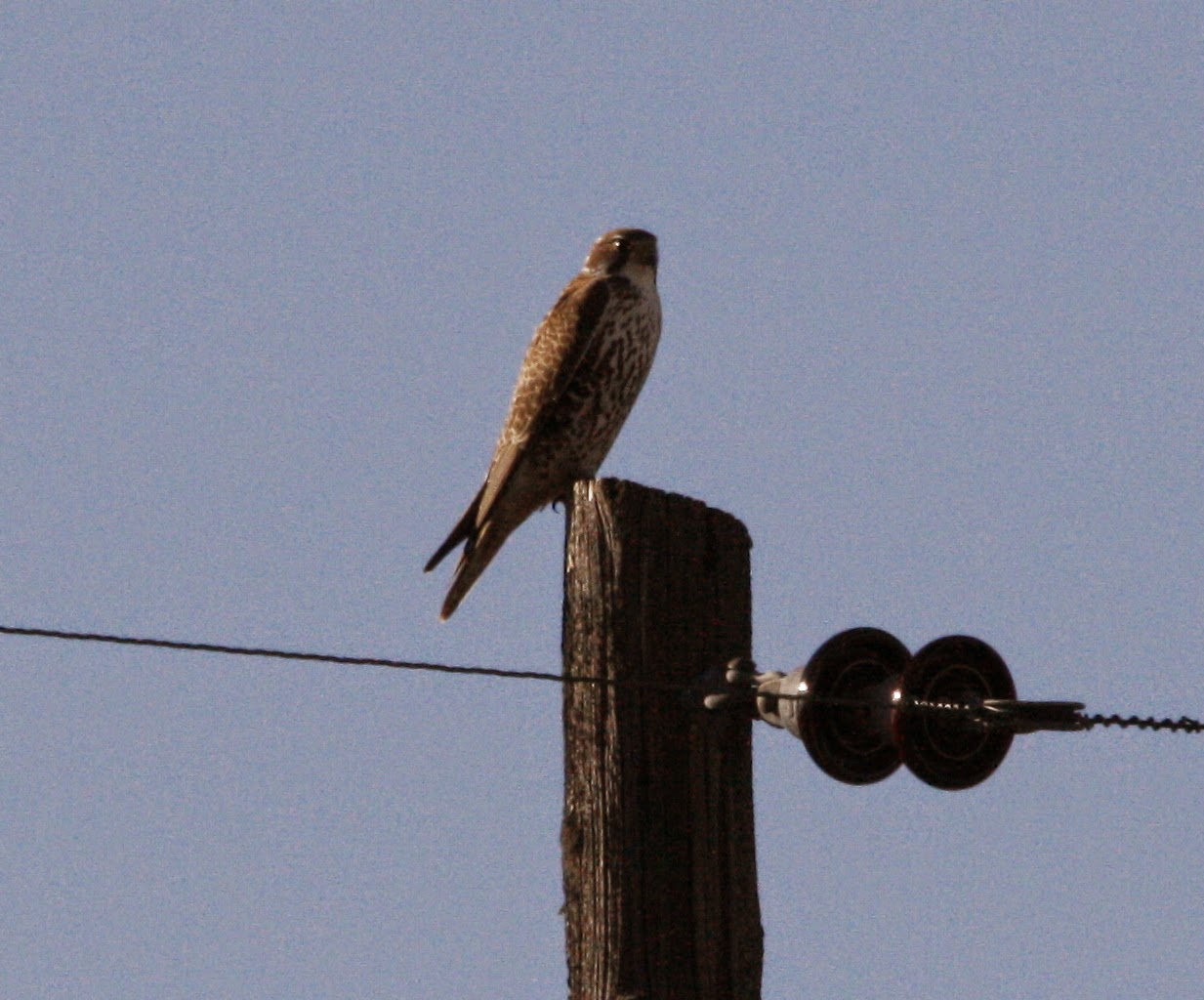Cutting directly from the website the Oregon Department of Fish and Wildlife has for the area :
"White River Wildlife Area was established in 1953. Located along the east slope of the Cascade Mountains in the north central part of Oregon, the wildlife area encompasses 29,480 acres. An additional 1,280 acres of land owned by the Bureau of Land Management (BLM) is managed by the ODFW bringing the total acres managed by the department to 30,760. The primary purpose of White River Wildlife Area is to provide winter range habitat for black-tailed deer and Rocky Mountain elk and to minimize big game damage to adjacent private agricultural lands."
I hiked in two areas, one off Badger Creek Road (pink stars) to see what was in the large meadows there (and to find the Redpolls spotted there on the CBC). In the afternoon I went to the area accessed from J Hix Road in the NE part of the unit (orange stars) . The red stars are where I hiked for the 2014 CBC with Joe B.
The unit is roughly bordered by Badger Creek Road to the south, FR 27 to the west, Friend Road to the north and Hwy 197 to the east. Yesterday I was able to drive all the way around the area, though FR 27 had rock slides to navigate.
The first area off Badger Creek is marked by meadows and plowed fields. Yesterday the weather was t-shirt warm, so I had hopes birds would be out and about. I was wondering if the huge flocks of Horned Larks in the county would use these closed in fields. Large as the fields are, the larks seem to like the wide open farm land farther east. I think this is the field the Redpolls were spotted in during the CBC...when it was 10 degrees out, not the 60 degrees it was yesterday. I wandered the fields hoping to spot something, all quiet except for Western Meadowlarks.
I should add the WRWMA does require a parking permit from the ODFW, however if you purchase a permit for other ODFW sites. like Sauvie Island, it is the same permit.
Birds seen here:
Canada Goose 5
Red-tailed Hawk 1
Rough-legged Hawk 1
Northern Flicker 2
Black-billed Magpie 2
Common Raven 3
Mountain Chickadee 13
Red-breasted Nuthatch 2
White-breasted Nuthatch 1
Brown Creeper 3
Pacific Wren 2
Golden-crowned Kinglet 3
American Robin 5
Dark-eyed Junco 11Western Meadowlark 5
Red-tailed Hawk 1
Rough-legged Hawk 1
Northern Flicker 2
Black-billed Magpie 2
Common Raven 3
Mountain Chickadee 13
Red-breasted Nuthatch 2
White-breasted Nuthatch 1
Brown Creeper 3
Pacific Wren 2
Golden-crowned Kinglet 3
American Robin 5
Dark-eyed Junco 11Western Meadowlark 5
After this area I drove out to FR 27 then went north then east on Friend Rd to J Hix Road. I parked at the closed gate on Hix and hiked along the road. It cuts across the fields out towards Postage Stamp Butte . I was hoping to find some longspurs.
This is a shot of the gate, my car is parked just on the other side. There is a farm house just down the road that has a nice collection of sparrows living in the area. If you have a car I would not drive up to gate, park in front of house and walk the short distance. The road is in very poor shape the last 100 yards or so to the gate. My all-wheel drive had no problems going up the mess.
This Prairie Falcon was on a phone pole along Dix Road.
Birds seen and or heard along this road were Horned Larks and Western Meadowlarks.
This first-winter Northern Shrike was along the road. For a summary on shrike ID, try HERE
A quiz for you:
Birds seen in this area:
California Quail 20
Northern Harrier 2
Red-tailed Hawk 1
Rough-legged Hawk 1
Rock Pigeon (Feral Pigeon) 3
Northern Flicker 2
Prairie Falcon 1
Northern Shrike 1
Black-billed Magpie 4
Common Raven 3
Horned Lark 24
American Robin 12
European Starling 20
White-crowned Sparrow 3
Golden-crowned Sparrow 4
Dark-eyed Junco 3
Western Meadowlark 30
Overall a very fun but unbirdy day. The day I was here on a CBC we had a bit better luck. I will need to plan a day in the spring to return.










